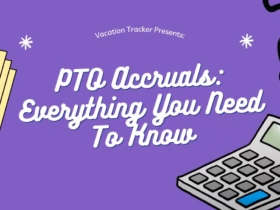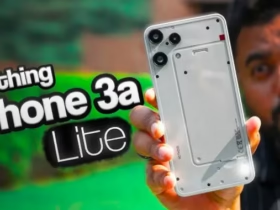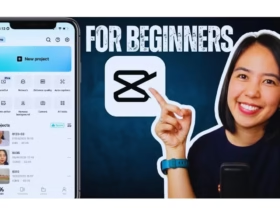In an era of global advertising, businesses are turning inward—toward their immediate communities. Hyperlocal social media marketing is the strategy that connects brands with nearby audiences through neighborhood-level engagement. It’s no longer enough to just be seen online; you need to be relevant where people live, eat, shop, and socialize. Whether you run a local bakery or a chain of salons, speaking directly to people in your vicinity brings higher trust, stronger brand loyalty, and better footfall. Hyperlocal campaigns are all about showing your presence where it truly matters.
Unlike broad national or international campaigns, hyperlocal strategies dig deep into culture, dialect, and everyday relevance. From leveraging local festivals to referencing street names or community groups, this form of social media marketing feels personal. It gives your brand a face and tone that says, “We’re part of your world.” Businesses that do this well often see higher engagement, faster customer acquisition, and better return on ad spend. Let’s break down how hyperlocal social media marketing works—and why it’s becoming the go-to for regional dominance.
Why Hyperlocal Marketing Matters More Than Ever
In today’s digital-first world, global visibility is impressive, but local dominance truly fuels growth for small and medium-sized businesses. This is where hyperlocal social media marketing proves its worth. Instead of casting a wide net, it zeroes in on specific cities, neighborhoods, and even individual blocks. It’s about speaking directly to the people who are most likely to walk into your store, use your service, or attend your event. The strategy goes beyond digital presence—it’s about being contextually relevant in the local scene.
Whether you operate a corner coffee shop, a yoga studio, or a home cleaning business, this approach puts your brand right in the path of your ideal customer. Localized content builds trust and familiarity. Community hashtags, geo-tagging, and regional shout-outs boost recognition. Targeted ads reduce wasted spend while increasing conversions. Most importantly, the results show up not only in likes and shares but in real foot traffic and loyal local customers. Hyperlocal isn’t just effective—it’s necessary.
Core Benefits of Hyperlocal Social Media Marketing
To get a clear picture of how hyperlocal strategies differ from traditional social media approaches, let’s break it down in the table below:
| Feature | Traditional Marketing | Hyperlocal Social Media Marketing |
| Target Area | Broad, national, or international | Pinpointed to neighborhoods or local zones |
| Content Style | Generic or mass-appeal | Culturally relevant and community-driven |
| Engagement | Impersonal, lower local response | High local interaction and sharing |
| Budget Efficiency | High spend, often wasted impressions | Cost-effective, focused on actual buyers |
| Conversion Rates | Moderate | Significantly higher with local intent |
Strategies That Make Hyperlocal Marketing Effective
The power of hyperlocal social media marketing that works depends entirely on how well it’s executed. Targeting by zip code alone won’t drive results if the content doesn’t feel personal. To truly connect, your posts must reflect the sights, language, and culture of the neighborhood. People pay attention when they see references to their street, a local festival, or even a slang phrase they use every day. It’s this familiarity that transforms passive scrolling into real interaction. Hyperlocal content should feel like it’s made for them, not just broadcast to them. When done right, it can dramatically improve engagement, footfall, and brand loyalty. Let’s use practical strategies that make these campaigns truly effective in any community.
Geo-targeted Paid Ads
Social platforms like Facebook, Instagram, TikTok, and Google make it easy to define audiences within just a few kilometers of your business. But to make those ads count, you need hyperlocal storytelling. Mention nearby venues, roads, parks, or events in your copy. Show real photos of your storefront or local people using your product. This makes the ad feel native and relatable—far more effective than generic promotions.
Leverage Local Influencers
Forget global celebrities. Hyperlocal campaigns thrive with micro-influencers—people who have between 1,000 to 10,000 engaged followers in your town or district. These creators know the culture, language, and humor of your community. Collaborating with them for giveaways, product demos, or event invites builds instant trust. Their audience is not just large—it’s loyal and local.
Local Hashtag Domination
Hyperlocal hashtags are a subtle yet powerful tactic. They categorize your content into searchable tags used by your community. Creating your hashtag, like #TasteBudMumbai, or riding popular ones like #SeattleEats, boosts discoverability. More importantly, tracking these hashtags helps you find user-generated content to repost, fostering a cycle of engagement and recognition.
Location Tagging in Every Post
One of the simplest yet most underused tactics is geotagging. In your posts, always mention your company’s location or a local attraction. Instagram, Facebook, and TikTok all favor content that includes location data. Posts with location tags get more impressions from nearby users, increasing the chance that your content reaches people who are physically close and ready to visit.
Comparing Platforms for Hyperlocal Marketing Effectiveness
Each social platform has different strengths when it comes to targeting local audiences. Here’s a table that highlights platform effectiveness:
| Platform | Strength | Best For |
| Precise geo-targeting ads | Events, local promotions | |
| Strong visual and story-based reach | Food, fashion, and fitness niches | |
| TikTok | Viral local trends | Entertainment, food challenges |
| Nextdoor | Neighborhood-specific communities | Home services, local events |
| Google My Business | Location-based search visibility | Service businesses, reviews & traffic |
Content Types That Boost Local Interaction
Creating strong hyperlocal social media content goes beyond tagging your city or dropping a pin. It’s about sharing stories that feel genuine, relatable, and deeply tied to the local experience. When your posts reflect the lifestyle, language, and values of your neighborhood, people notice—and engage. From visuals that feature familiar spots to captions that speak their slang, relevance becomes your superpower. Authentic content builds trust fast. Engagement rises because the message feels personal. Below are five content types that consistently drive meaningful local interaction.
Behind-the-scenes (BTS) Content
Give your audience a glimpse of what happens behind closed doors. Share the story of your morning prep routine, show off your team packaging an order, or introduce new staff members. Celebrating staff birthdays or customer milestones through casual videos or candid photos helps humanize your brand. These personal touches create emotional bonds and make locals feel like part of your journey.
Local Partnerships
Teaming up with nearby businesses boosts visibility for both sides. You can create cross-promotional content like a shared Instagram reel, a co-hosted Facebook giveaway, or even a collaborative local event. For example, a café and a bookstore can feature each other’s spaces or offer combo deals for mutual foot traffic. These partnerships build community while reinforcing your commitment to local support.
Real-Time Community Engagement
There’s no better way to show you’re in tune with the neighborhood than by being present at events. Whether it’s a local food fair, school fundraiser, or street festival, use social media tools like Instagram Stories or Facebook Live to share the action. This kind of content is spontaneous and engaging, and it places your brand right at the heart of the community conversation.
Customer-Generated Content
Empower your customers to become your marketers. Encourage them to tag your location, use a local hashtag, or share their experience at your store. Put their work on display in your feed or stories. Offering small incentives like a discount for a tagged post or a feature in your monthly spotlight can spark a steady stream of local content that builds trust and buzz organically.
Mistakes to Avoid in Hyperlocal Campaigns
Even with the right tools, hyperlocal social media marketing can fail if businesses don’t pay attention to the small but important. One major mistake is ignoring local culture, language, or community-specific slang—content that feels generic simply won’t resonate. Over-targeting with irrelevant posts or ad fatigue can also hurt brand trust. Another pitfall is focusing only on scheduled content without engaging in real-time. Communities thrive on interaction, not automation.
Some brands rely too heavily on paid promotions and forget the power of organic reach through genuine conversation. Skipping collaboration with local influencers is another missed opportunity. Most importantly, many businesses don’t analyze their campaign performance at the neighborhood level, which means they miss chances to refine and improve results.
Measuring Success at the Street Level
To know if your hyperlocal social media marketing is working, you need to measure the impact not just online but also in your community. Start by monitoring geo-tagged engagement like comments, likes, and shares from people in your area. Use analytics to track impressions from local IP addresses or users within a targeted radius. Another effective indicator is an increase in foot traffic or in-store visits during and after campaign runs.
Growth in followers who mention local landmarks or use your branded hashtags shows expanding local reach. Check for mentions in community groups, neighborhood pages, or local influencer content. Reviews and messages referencing a specific post or event also signal real-world success. Hyperlocal success is as much about visibility as it is about local action—and every metric should lead back to community impact.
Wrapping Up
Hyperlocal social media marketing is more than just a buzzword—it’s a game-changer for businesses looking to connect with real people in real places. By focusing on neighborhoods, towns, or city blocks, brands can become part of the daily lives of their target audience. It’s not just about selling; it’s about serving, responding, and engaging in meaningful ways that global campaigns often miss. When done right, this strategy builds loyalty, drives word-of-mouth, and keeps your brand top-of-mind locally.
With the right mix of content, geo-targeting, and authentic interaction, your business can grow from a local favorite into a community staple. As competition increases online, the brands that win will be the ones that go small to grow big. Hyperlocal marketing doesn’t just work—it builds the kind of trust that algorithms can’t replicate. It’s time to stop broadcasting and start building where it counts: right next door.
FAQs
How is hyperlocal social media marketing different from general digital marketing?
Promoting content to users in a very specific geographic area—typically within a few kilometers—is the main goal of hyperlocal social media marketing. Unlike general digital marketing, which targets broader audiences across regions, states, or even globally, hyperlocal strategies deliver messages tailored to local cultures, interests, and communities. As a result, the information feels more pertinent and intimate.
Which types of businesses benefit the most from hyperlocal marketing campaigns?
Local businesses such as restaurants, hair salons, fitness centers, real estate agents, clinics, and event organizers gain the most from hyperlocal campaigns. These companies depend heavily on nearby customers for day-to-day operations. By targeting people within their immediate surroundings, they increase brand visibility, foot traffic, and trust. Even service providers like plumbers, electricians, or pet groomers thrive with this model, as customers prefer professionals who are close by and available quickly.
Can hyperlocal marketing be successful without using paid advertisements?
Yes, organic strategies can work in hyperlocal social media marketing. Posting regularly with geotags, collaborating with micro-influencers, and engaging in local community pages or groups helps build visibility naturally. Creating hashtags relevant to the area and encouraging user-generated content also boosts credibility and engagement. However, using paid ads can amplify results by reaching hyper-targeted audiences faster.
How often should businesses post content in a hyperlocal campaign?
A good frequency is 3 to 5 times per week for consistent visibility. Content should include a mix of promotional posts, behind-the-scenes glimpses, customer spotlights, and local event tie-ins. During special events or community happenings, increase posting to stay relevant and join the local buzz. It’s important not to overwhelm followers with overly promotional content balance.
What metrics should I track to measure success in hyperlocal social media marketing?
Focus on hyperlocal-specific metrics like geo-tagged engagement (likes, shares, and comments from nearby users), increases in local followers, and impressions from IPs within your service area. Also, track offline signals, walk-in traffic, calls, or appointments after a campaign launches. Monitor mentions by local influencers or community pages, as they help extend your reach within a defined zone.
Which platforms work best for social media initiatives that are hyperlocal?
Facebook and Instagram are great because of their strong content-sharing and geo-targeting features. TikTok is emerging as a strong player, especially for younger demographics, offering local content discovery and trends. Nextdoor is hyperlocal by design, connecting neighbors and community groups for highly trusted exposure. Google My Business is crucial for visibility in local searches and maps.
How can small businesses create content that feels truly hyperlocal?
Start by showcasing the people behind your brand through staff photos, local event participation, or stories about your community involvement. Mention neighborhood landmarks, popular hangouts, or local phrases/slang in your captions. Tag your physical location and use city or area-specific hashtags. Collaborate with other small businesses for cross-promotional posts or giveaways.









